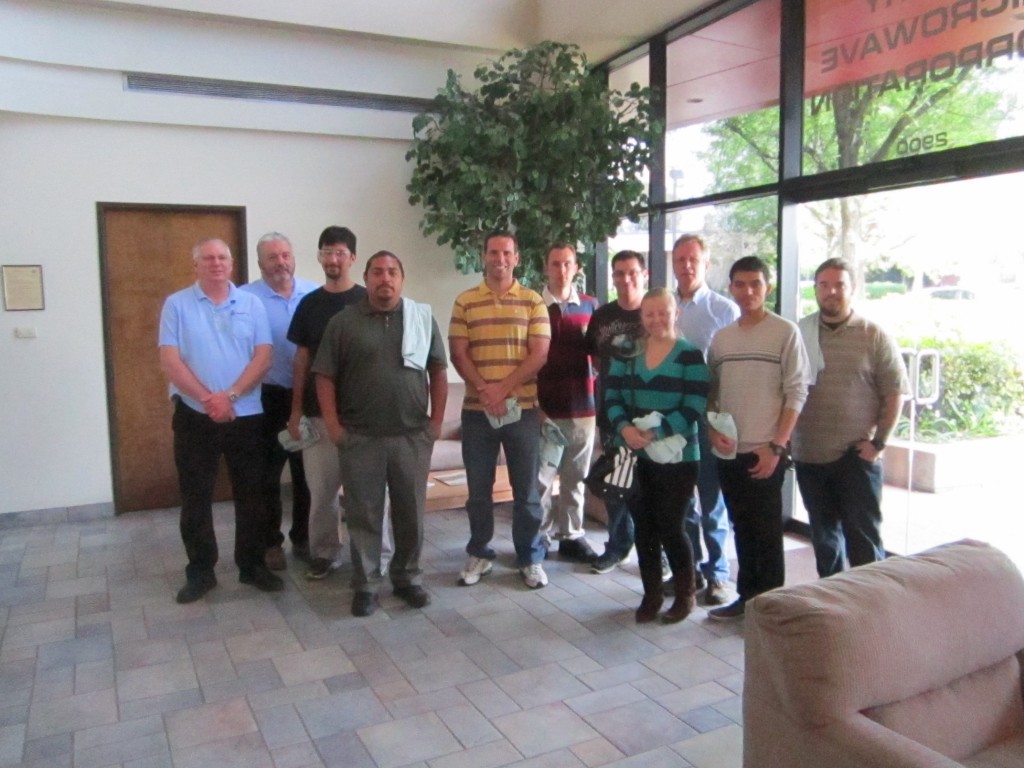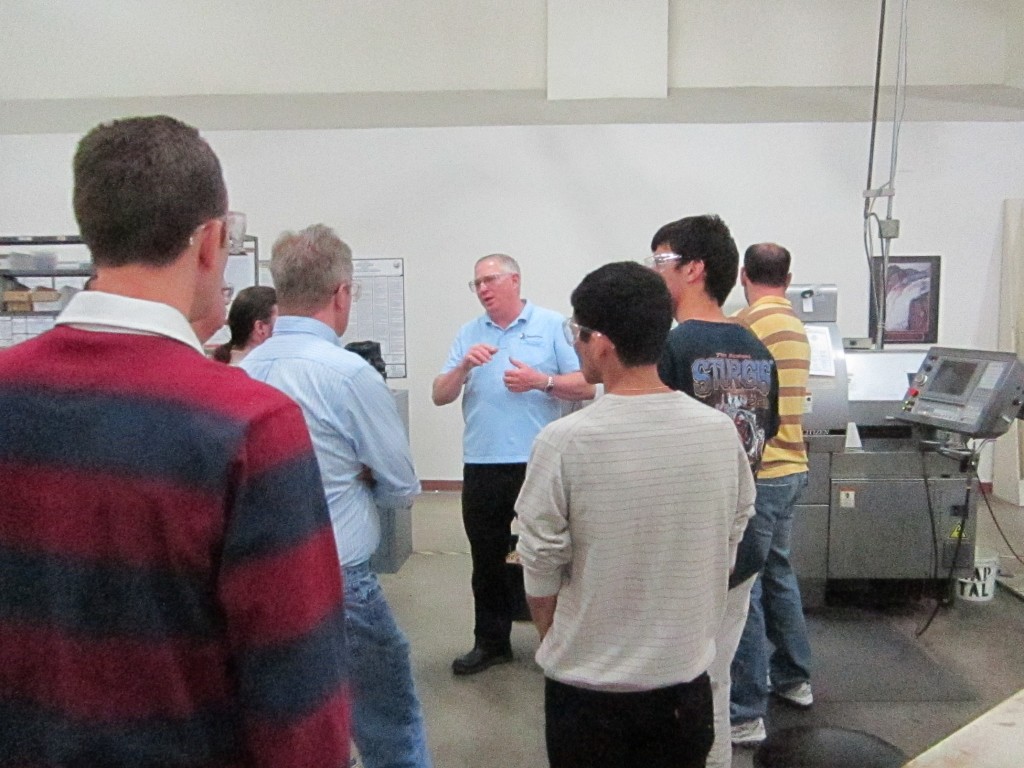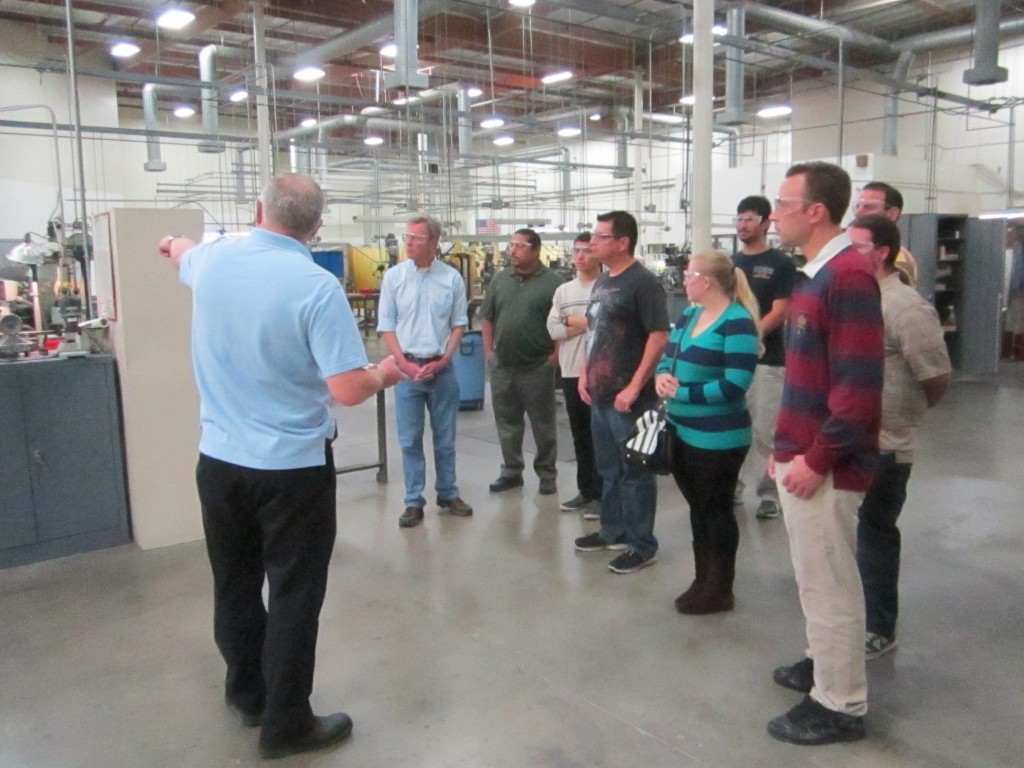MT SAC STUDENTS TOUR AND LEARN AT MAURY MICROWAVE ON MAY 9, 2014
| May 26, 2014 | Posted by Frank Gomez under COMSOC, CS, EDCAS, EmpNet, General, MTT/APS |
Comments off
|
Here is the excellent report from Professor Jonathan Hymer of Mt San Antonia College in Walnut CA filed after their recent student visit and tour of the Maury Microwave facility near Ontario Airport, CA on May 9, 2014. You can easily detect the enthusiasm of all the My SAC electronics students as they saw the plant and viewed the electronics calibrations in progress.
Yes, Professors Joseph Denny and Jonathan Hymer, we live in the age of technology and technological complexity; there is a constant need for bright, energetic and engaged students to learn these fields. It is a direct pathway to rewarding careers. Both the IEEE Foothill Section and Maury Microware are glad to have helped set up this tour for your students.
Professor Jonathan Hymer’s report:
Jonathan Hymer and Joseph Denny, both faculty members of the Electronics & Computer Technology Department at Mt. San Antonio College, accompanied six present and former students on a recent visit to Maury Microwave. The visit featured a tour of the manufacturing floor, test and characterization facility, and engineering offices, and concluded with a question-and-answer session with Rusty Myers, Director of Engineering.
The visit was extremely valuable, and we are deeply grateful both to Mr. Myers and to Max Cherubin of Panatron for taking the time from their busy schedules to provide this opportunity for us to witness first-hand how the abstract principles of microwave technology manifest themselves in real-world systems. As an instructor, I frequently struggle with how to make abstract concepts relevant to students who, because of the realities of curriculum and scheduling, may not have a great deal of electronics under their belts at the time they take the microwave communications course. Students respond to reality: when they see course ideas in use on the factory floor or in the test lab, they begin to appreciate that what they are studying in the classroom does translate to real world employment opportunity.
This year, the scheduling was particularly fortunate because we had covered network analysis and calibration concepts in my microwave communications course only a few days before the tour. The three students on the tour currently taking that course were able to see how the impedance-matching lab exercise in which they used a slide-screw tuner to tune out a capacitive discontinuity created by a diaphragm (iris) in a WR-90 waveguide setup. It was gratifying to witness the characterization of Maury’s automated slide-screw tuners in the test lab so soon after the students did essentially the same exercise in their lab.
I was also enlightened by the manufacturing aspect of Maury’s business. Mt. SAC has a manufacturing and Engineering Design program (now called Industrial Design Engineering), and I was struck by how reliant the firm is on skilled machinists, CNC programmers, and tool-and-die makers to produce the high-precision connectors and other products it sells. Our school has difficulty attracting students to manufacturing related programs, and I believe that at least some of the problem has to do with a lack of exposure. Further outreach efforts, like those undertaken by Maury, are needed to persuade a new generation of students that machining and other skilled crafts are not the vestiges of a dying manufacturing sector but are the foundations of successful and rewarding careers.
Also enlightening to me was the sheer amount of effort and labor invested in each of Maury’s high-precision microwave connectors. This too serves as an instructional moment to inform students of the issues involved with high-frequency (short-wavelength) electronics. I personally was unaware before taking this tour of how many procedures are involved with fabricating and then verifying the performance characteristics of connectors, adaptors, and other passive devices intended to work over a wide frequency range.
Taking this tour and talking with Mr. Myers, I am convinced that there is value in continuing to teach a full microwave-technology course within a two-year technology program. Mt. SAC’s Electronics department is one of the last in the area (if not the state) to require a course in microwave communications as part of its core curriculum. Mr. Myers indicated that, in his experience, much training in the microwave area has been relegated to graduate-level engineering programs, with implications for the availability of skilled technologists and engineers. The focus of our department for many years has been on training engineering technicians for employment in environments like those of Maury Microwave. Successful employees in these laboratory environments require training that places a solid emphasis on the fundamentals. I am gratified to see that there is still an employment demand for individuals with this scope of training.
Finally, students were able to ask Mr. Myers questions pertaining to employment opportunities and to hear directly from him as to the qualities him firm seeks as well as the challenges inherent in working in a relatively small company. One of the challenges faced by the employer is in identifying prospective employees with the ability to anticipate and proactively solve problems to ensure company and customer needs are met. These “soft skills” are those most in demand by employers, and those are our program attempts to address as part of the curriculum.
Again, I would like to thank Messrs, Myers and Cherubin for inviting us to tour the Maury facilities. I hope to maintain a relationship with Maury Microwave over the long term, in no small part to expose students to areas of specialization that will continue to grow along with demand for microwave-based communications technologies.
HERE ARE SOME PHOTOS TAKEN AT THE TOUR.
Yes, Thank you, Professors Hymer and Denny, for all your efforts with your Mt SAC students.


